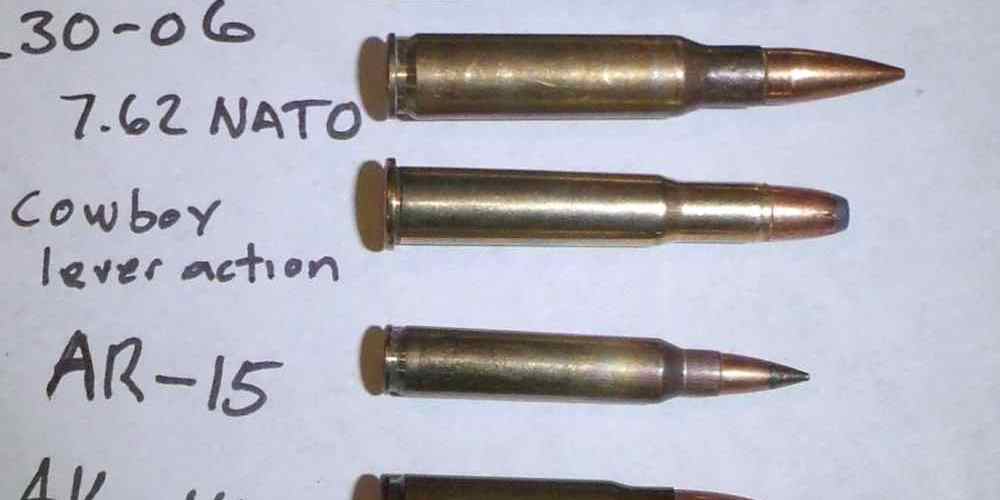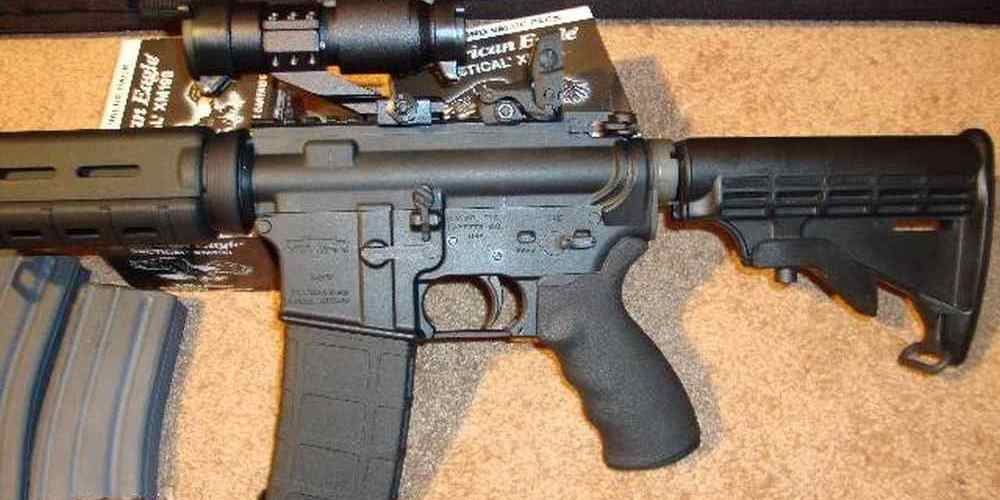“Quietly powerful with steel-cased ammo.”
Pros and Cons of Using Steel-Cased Ammo in a Suppressed AR15
Steel-cased ammunition has become a popular choice for many gun owners due to its affordability and availability. However, when it comes to using steel-cased ammo in a suppressed AR15, there are some pros and cons to consider.
One of the main advantages of using steel-cased ammo in a suppressed AR15 is the cost savings. Steel-cased ammunition is typically cheaper than brass-cased ammo, making it a more budget-friendly option for those who shoot frequently. This can be especially beneficial for shooters who use their AR15 for training or target practice.
Another benefit of using steel-cased ammo in a suppressed AR15 is its reliability. While some shooters may be concerned about the quality of steel-cased ammunition, many manufacturers produce high-quality steel-cased rounds that perform just as well as brass-cased ammo. This means that you can trust your steel-cased ammo to function reliably in your AR15, even when using a suppressor.
In addition to cost savings and reliability, steel-cased ammo also tends to be more readily available than brass-cased ammo. This can be a major advantage for shooters who have trouble finding their preferred ammunition in stock. With steel-cased ammo, you can often find what you need at a lower price and with less hassle.
However, there are some drawbacks to using steel-cased ammo in a suppressed AR15. One of the main concerns is the potential for increased wear and tear on your firearm. Steel-cased ammo is harder than brass-cased ammo, which can cause more wear on the chamber and other components of your AR15. This can lead to increased maintenance and potentially shorten the lifespan of your firearm.
Another downside to using steel-cased ammo in a suppressed AR15 is the potential for decreased accuracy. Some shooters have reported that steel-cased ammo produces less consistent results than brass-cased ammo, which can affect your shooting performance. If you are using your AR15 for precision shooting or competition, this may be a significant drawback to consider.
Despite these drawbacks, many shooters find that the benefits of using steel-cased ammo in a suppressed AR15 outweigh the potential downsides. With its affordability, reliability, and availability, steel-cased ammo can be a practical choice for many gun owners. By weighing the pros and cons of using steel-cased ammo in your AR15, you can make an informed decision about whether it is the right choice for your shooting needs.
In conclusion, while there are some drawbacks to using steel-cased ammo in a suppressed AR15, the cost savings, reliability, and availability of this type of ammunition make it a viable option for many shooters. By considering the pros and cons of using steel-cased ammo in your AR15, you can determine whether it is the right choice for your shooting preferences.

How Steel-Cased Ammo Affects Suppressor Performance
Steel-cased ammunition has become a popular choice for many gun owners due to its affordability and availability. However, there has been some debate over whether or not it is safe to shoot steel-cased ammo in a suppressed AR15. In this article, we will explore how steel-cased ammo affects suppressor performance and whether or not it is a viable option for your firearm.
When it comes to shooting steel-cased ammo in a suppressed AR15, there are a few factors to consider. One of the main concerns is the potential for increased wear and tear on your suppressor. Steel-cased ammo is typically harder than brass-cased ammo, which can cause more friction and heat buildup in the suppressor. This can lead to a shorter lifespan for your suppressor and potentially cause damage over time.
Another issue to consider is the potential for increased fouling in your suppressor. Steel-cased ammo tends to produce more carbon buildup than brass-cased ammo, which can lead to more frequent cleanings and maintenance for your suppressor. This can be a hassle for some gun owners who prefer a low-maintenance setup.
Despite these potential drawbacks, many gun owners still choose to shoot steel-cased ammo in their suppressed AR15. One of the main reasons for this is the cost savings. Steel-cased ammo is typically much cheaper than brass-cased ammo, making it an attractive option for those looking to save money on ammunition.
Additionally, some gun owners have found that steel-cased ammo performs just as well as brass-cased ammo in their suppressed AR15. While there may be some differences in accuracy and reliability, many shooters find that the differences are minimal and do not outweigh the cost savings of shooting steel-cased ammo.
If you do choose to shoot steel-cased ammo in your suppressed AR15, there are a few things you can do to mitigate the potential drawbacks. One option is to use a higher-quality suppressor that is designed to handle the increased wear and tear of steel-cased ammo. This can help prolong the life of your suppressor and reduce the risk of damage over time.
Another option is to clean your suppressor regularly to remove any carbon buildup that may occur from shooting steel-cased ammo. This can help maintain the performance of your suppressor and prevent any issues that may arise from fouling.
In conclusion, shooting steel-cased ammo in a suppressed AR15 can be a viable option for many gun owners. While there are some potential drawbacks to consider, such as increased wear and tear on your suppressor and more frequent cleanings, the cost savings and performance benefits may outweigh these concerns for some shooters. Ultimately, the decision to shoot steel-cased ammo in a suppressed AR15 is a personal one that should be based on your individual preferences and needs.
Best Practices for Shooting Steel-Cased Ammo in a Suppressed AR15
Steel-cased ammunition has become a popular choice for many shooters due to its affordability and availability. However, there is some debate among gun enthusiasts about whether it is safe to shoot steel-cased ammo in a suppressed AR15. In this article, we will explore the best practices for shooting steel-cased ammo in a suppressed AR15 to help you make an informed decision.
First and foremost, it is important to understand the differences between steel-cased and brass-cased ammunition. Steel-cased ammo is typically coated with a layer of lacquer or polymer to prevent corrosion, while brass-cased ammo is known for its reliability and ease of extraction. When shooting steel-cased ammo in a suppressed AR15, the main concern is whether the lacquer or polymer coating will cause fouling or damage to the suppressor.
To address this concern, it is recommended to use high-quality steel-cased ammunition from reputable manufacturers. Cheaper, low-quality steel-cased ammo may have a thicker or lower-quality coating that could potentially cause issues with your suppressor. By investing in higher-quality steel-cased ammo, you can minimize the risk of fouling and damage to your suppressor.
Another important factor to consider when shooting steel-cased ammo in a suppressed AR15 is the type of suppressor you are using. Some suppressors are specifically designed to handle the increased fouling and heat generated by steel-cased ammo, while others may not be as durable. It is important to consult with the manufacturer of your suppressor to determine if it is rated for use with steel-cased ammo.
In addition to using high-quality steel-cased ammo and a compatible suppressor, it is also important to properly maintain your firearm and suppressor. Regular cleaning and maintenance will help prevent fouling and damage caused by steel-cased ammo. Be sure to follow the manufacturer’s recommendations for cleaning and maintenance to ensure the longevity of your equipment.
When shooting steel-cased ammo in a suppressed AR15, it is also important to pay attention to the performance of your firearm. Steel-cased ammo may not be as reliable or consistent as brass-cased ammo, so it is important to monitor for any malfunctions or issues while shooting. If you experience frequent malfunctions or failures to feed, it may be a sign that your firearm is not compatible with steel-cased ammo.
In conclusion, shooting steel-cased ammo in a suppressed AR15 can be a safe and cost-effective option if done correctly. By using high-quality steel-cased ammo, a compatible suppressor, and proper maintenance practices, you can enjoy the benefits of steel-cased ammo without risking damage to your equipment. Remember to always prioritize safety and follow the manufacturer’s recommendations when shooting steel-cased ammo in a suppressed AR15.
Comparing Steel-Cased vs Brass-Cased Ammo in a Suppressed AR15
Steel-cased ammo has become a popular choice for many gun owners due to its affordability and availability. However, there has been some debate over whether or not it is safe to shoot steel-cased ammo in a suppressed AR15. In this article, we will explore the differences between steel-cased and brass-cased ammo and discuss the potential impact on your suppressed AR15.
When it comes to shooting steel-cased ammo in a suppressed AR15, there are a few factors to consider. One of the main concerns is the potential for increased wear and tear on your firearm. Steel-cased ammo is typically harder than brass-cased ammo, which can cause more wear on the chamber and other components of your AR15. This increased wear can lead to malfunctions and decreased accuracy over time.
Another factor to consider is the potential for increased fouling when shooting steel-cased ammo in a suppressed AR15. Steel-cased ammo tends to produce more carbon buildup than brass-cased ammo, which can lead to more frequent cleanings and maintenance. This can be especially problematic when shooting suppressed, as the suppressor can exacerbate the fouling issue.
Despite these potential drawbacks, many gun owners still choose to shoot steel-cased ammo in their suppressed AR15. The main reason for this is the cost savings. Steel-cased ammo is typically much cheaper than brass-cased ammo, making it an attractive option for those looking to save money on ammunition. Additionally, steel-cased ammo is widely available and can be found in a variety of calibers, making it a convenient choice for many shooters.
If you do choose to shoot steel-cased ammo in your suppressed AR15, there are a few things you can do to mitigate the potential drawbacks. One option is to invest in a high-quality suppressor that is designed to handle the increased wear and tear of steel-cased ammo. Additionally, regular cleaning and maintenance of your firearm can help prevent excessive fouling and keep your AR15 running smoothly.
Ultimately, the decision to shoot steel-cased ammo in a suppressed AR15 is a personal one. While there are potential drawbacks to consider, many gun owners find that the cost savings and convenience of steel-cased ammo outweigh the potential issues. If you do choose to shoot steel-cased ammo in your suppressed AR15, be sure to monitor your firearm for any signs of excessive wear or fouling and take appropriate measures to address any issues that may arise.
In conclusion, shooting steel-cased ammo in a suppressed AR15 is a viable option for many gun owners. While there are potential drawbacks to consider, with proper maintenance and care, you can enjoy the cost savings and convenience of steel-cased ammo without sacrificing the performance of your firearm. As always, be sure to follow all safety guidelines and regulations when shooting any type of ammunition in your AR15.
Potential Issues to Watch Out for When Using Steel-Cased Ammo in a Suppressed AR15
Steel-cased ammunition has become a popular choice for many gun owners due to its affordability and availability. However, when it comes to using steel-cased ammo in a suppressed AR15, there are some potential issues to watch out for.
One of the main concerns when using steel-cased ammo in a suppressed AR15 is the increased wear and tear on the firearm. Steel-cased ammo is typically harder than brass-cased ammo, which can cause more wear on the chamber and other components of the gun. This increased wear can lead to malfunctions and decreased accuracy over time.
Another issue to consider when using steel-cased ammo in a suppressed AR15 is the potential for increased fouling. Steel-cased ammo tends to produce more carbon buildup than brass-cased ammo, which can lead to more frequent cleanings being necessary. This buildup can also affect the performance of the suppressor, causing it to become less effective over time.
Additionally, steel-cased ammo may not be as reliable as brass-cased ammo. Some shooters have reported more frequent malfunctions when using steel-cased ammo, such as failure to feed or extract. This can be frustrating and potentially dangerous, especially in a self-defense situation.
Despite these potential issues, many shooters still choose to use steel-cased ammo in their suppressed AR15s due to its affordability. If you decide to use steel-cased ammo in your suppressed AR15, there are some steps you can take to mitigate these potential issues.
First, make sure to clean your firearm regularly and thoroughly. This will help prevent excessive wear and carbon buildup, keeping your gun in good working condition. Additionally, using a high-quality lubricant can help reduce friction and wear on the moving parts of the gun.
It’s also important to pay attention to the type of steel-cased ammo you are using. Some brands may be more prone to malfunctions than others, so it’s worth experimenting with different brands to find one that works well in your firearm.
Lastly, consider investing in a high-quality suppressor that is designed to handle the increased fouling and wear that can come with using steel-cased ammo. A well-made suppressor can help mitigate these issues and keep your firearm running smoothly.
In conclusion, while there are some potential issues to watch out for when using steel-cased ammo in a suppressed AR15, with proper maintenance and care, you can still enjoy the benefits of this affordable ammunition. Just be aware of the increased wear and tear, fouling, and potential reliability issues that may come with using steel-cased ammo, and take steps to mitigate these issues to keep your firearm running smoothly.




